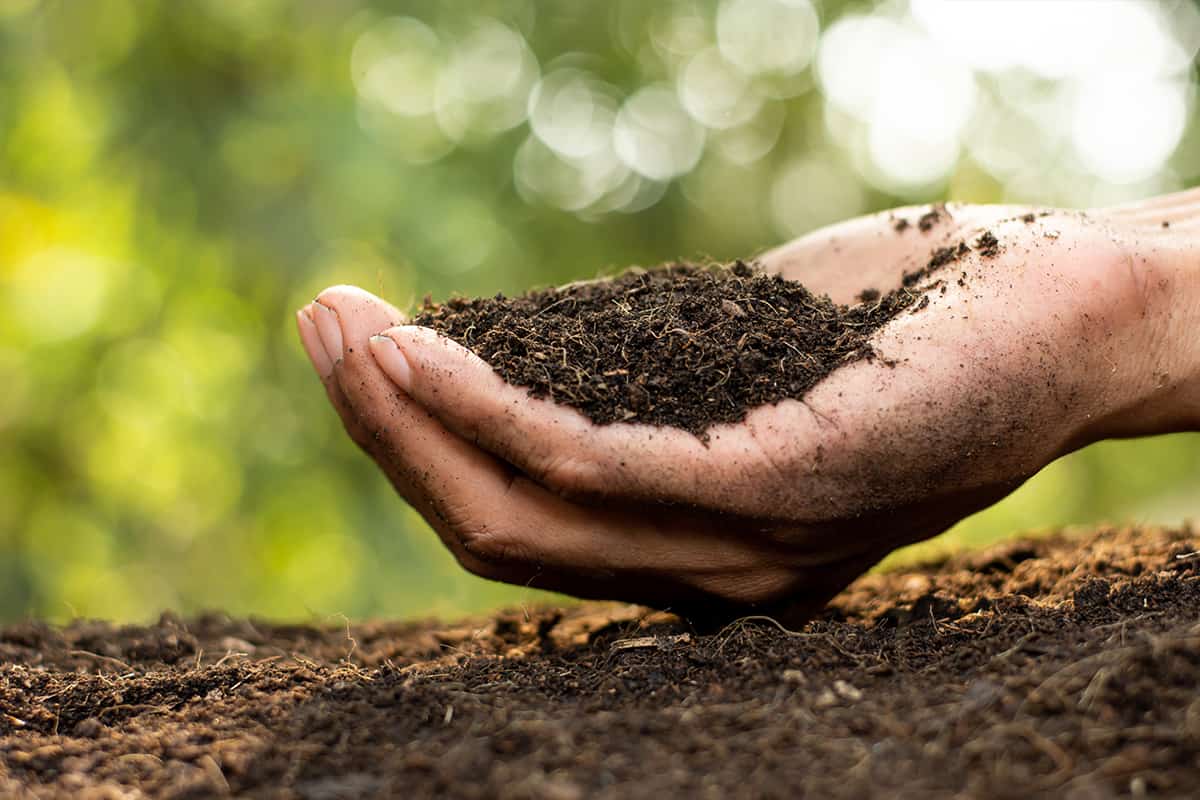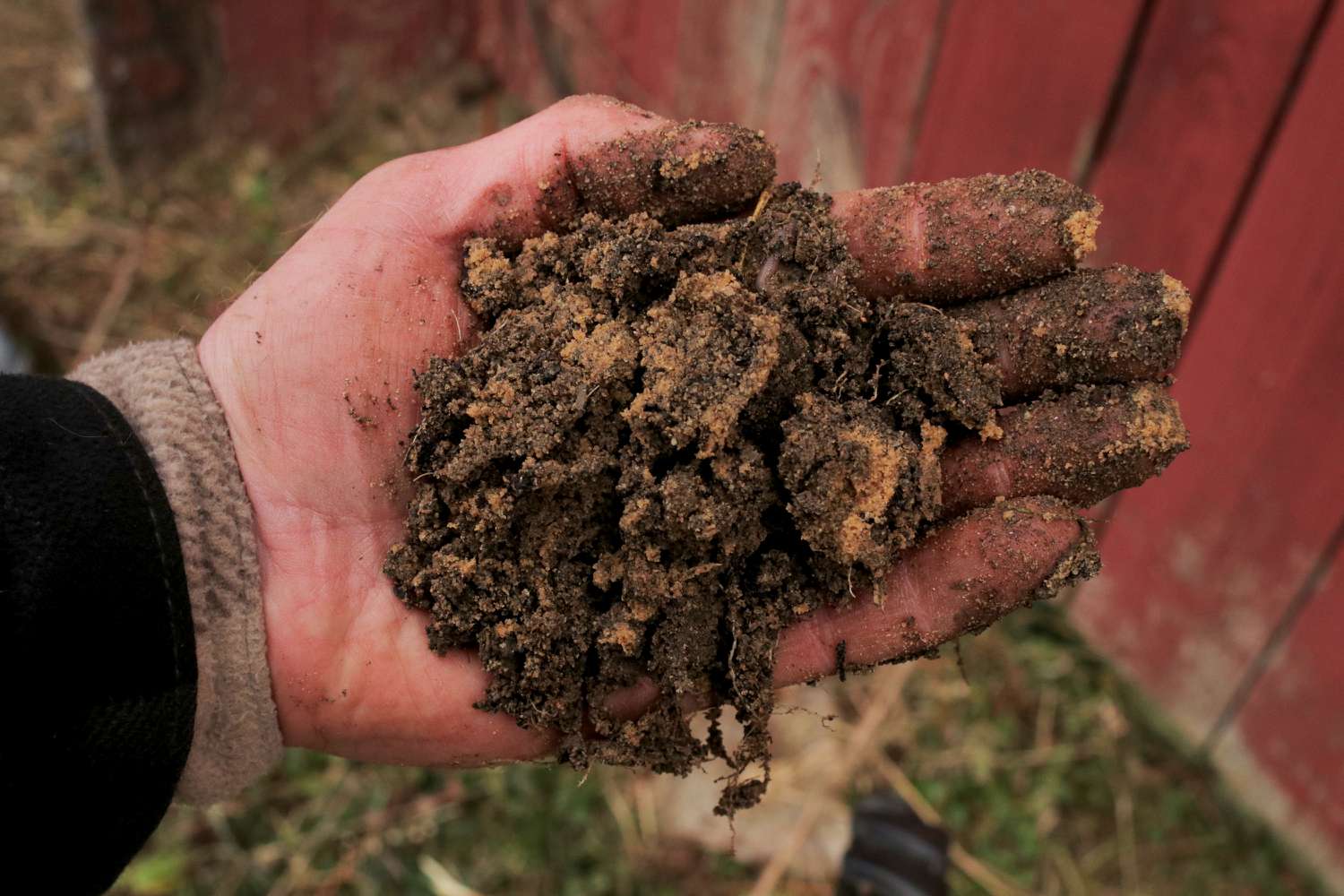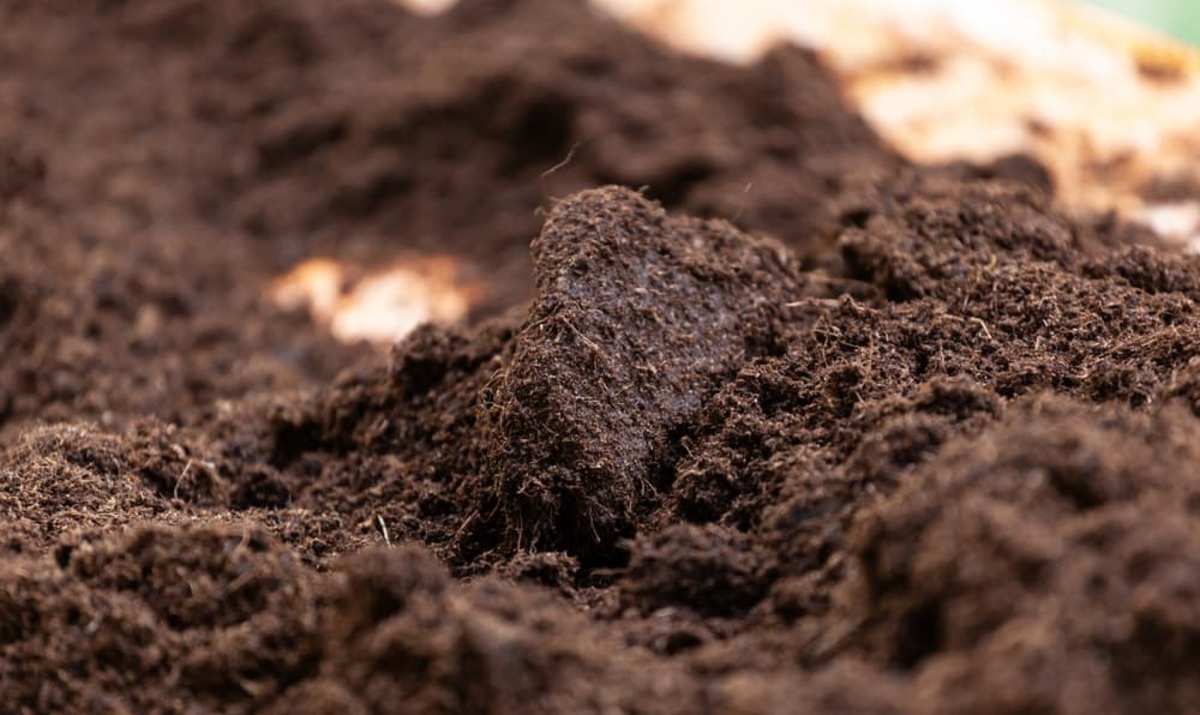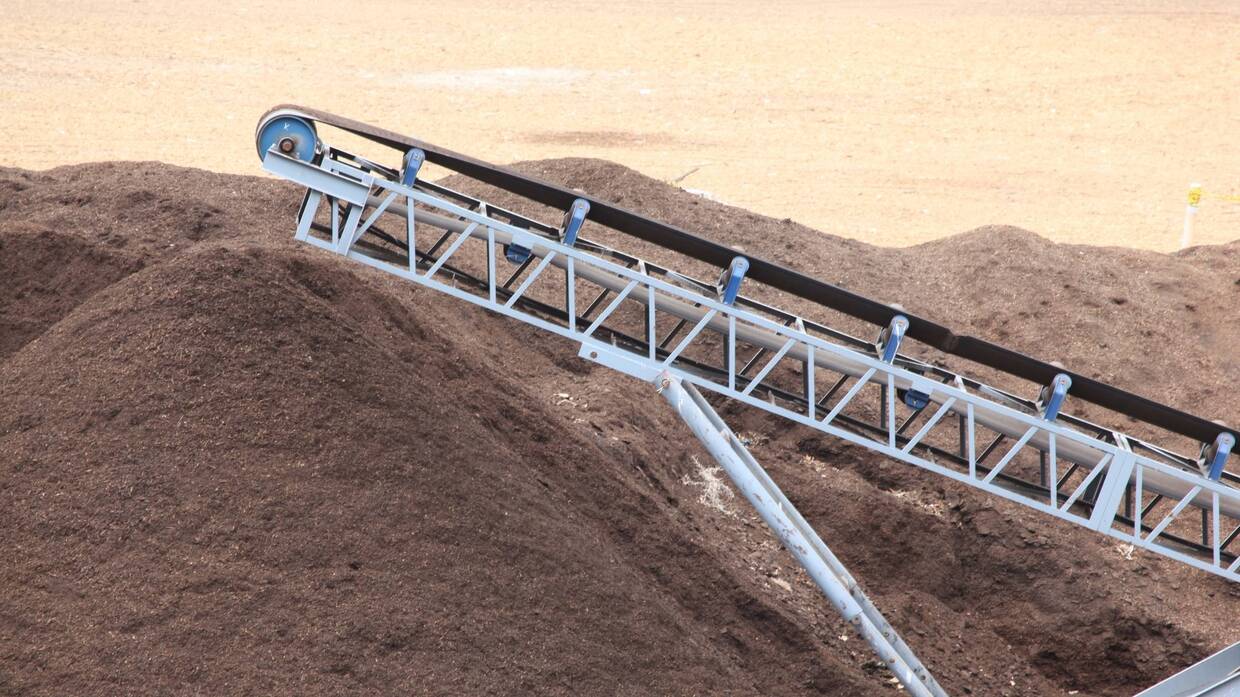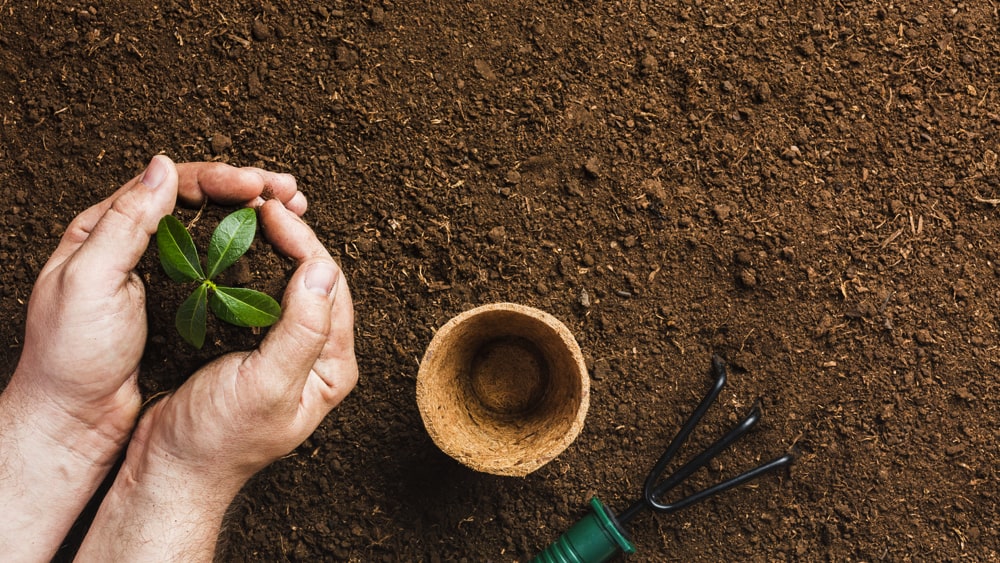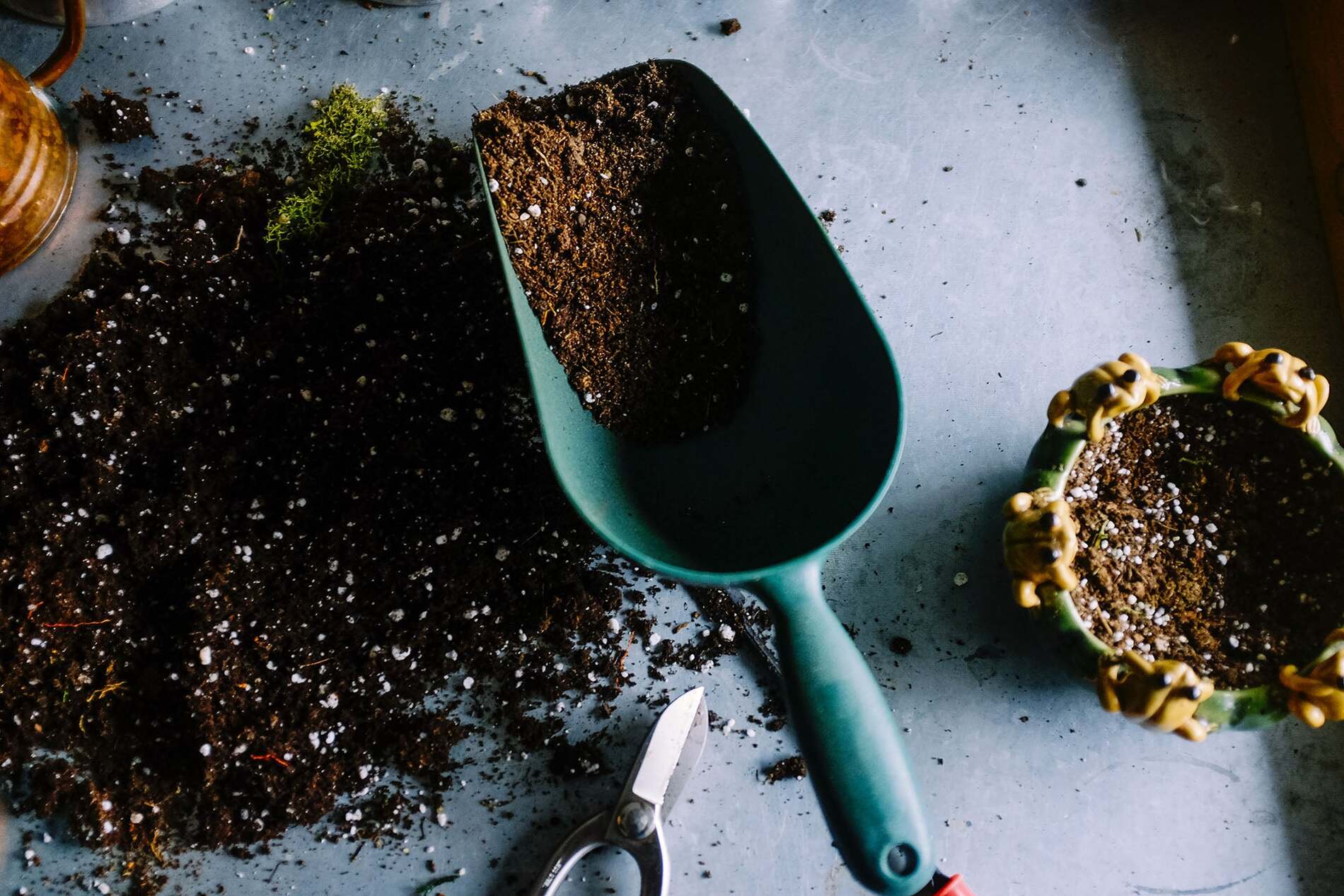Home>Gardening Basics>Understanding Soil>What Is The Problem With Plants Not Being On The Topsoil


Understanding Soil
What Is The Problem With Plants Not Being On The Topsoil
Modified: February 8, 2024
Improve your understanding of soil with this informative article discussing the problem of plants not being on the topsoil and its implications.
(Many of the links in this article redirect to a specific reviewed product. Your purchase of these products through affiliate links helps to generate commission for Chicagolandgardening.com, at no extra cost. Learn more)
Table of Contents
Introduction
Soil is a vital component of our ecosystem, supporting the growth and sustenance of plants. It provides a medium for roots to anchor themselves, access water and nutrients, and facilitates the exchange of gases. Within the soil profile, topsoil plays a crucial role in supporting plant life. Topsoil is the uppermost layer of soil, rich in organic matter, minerals, and microorganisms. It is here that plants thrive, and their presence is essential for the health and productivity of the topsoil.
Plants, through their extensive root systems, contribute to the structure and stability of topsoil. They help prevent erosion by holding the soil particles together and reducing the impact of wind and water. Additionally, plants play a significant role in nutrient cycling, extracting minerals from the soil and returning essential organic matter through the decomposition of plant material. The presence of plants on the topsoil also fosters biodiversity, providing habitats for a wide range of organisms.
However, there is a growing problem with plants not being present in significant numbers on the topsoil. This issue arises from various factors such as deforestation, erosion, intensive agriculture, and urbanization. As plants disappear from the topsoil, we face serious consequences that affect not just the health of the soil but also the overall ecosystem.
In this article, we will discuss the problems that arise when plants are no longer prevalent on the topsoil. We will explore the impact on soil erosion, nutrient cycling, and biodiversity. Furthermore, we will also provide potential solutions to address this issue and restore the balance between plants and topsoil.
Importance of Plants to Topsoil
Plants play a crucial role in maintaining the health and fertility of topsoil. Their presence on the topsoil promotes a multitude of beneficial processes that contribute to its overall quality. Let’s explore some of the key ways in which plants are important to topsoil:
- Soil Structure: Plants help create a stable soil structure by penetrating their roots deep into the ground. This root network binds the soil particles together, preventing erosion caused by wind and water. The roots also enhance soil porosity, allowing for better water infiltration and aeration.
- Mitigating Erosion: The roots of plants act as a natural erosion control measure. They anchor the soil, preventing it from being washed away or blown off by the elements. In areas where plants are absent, topsoil erosion becomes more prevalent, leading to the loss of nutrient-rich soil and decreased soil fertility.
- Nutrient Cycling: Plants extract essential nutrients from the soil through their roots. As they grow and undergo photosynthesis, they incorporate carbon dioxide from the atmosphere and convert it into organic matter, which is subsequently returned to the soil when plants die, decompose, or shed leaves. This organic matter enriches the topsoil, providing a continuous supply of nutrients for other plants and microorganisms.
- Biodiversity Support: Plants provide habitats and food sources for a wide array of organisms, including insects, birds, and microorganisms. The presence of diverse plant species on the topsoil promotes a healthy and balanced ecosystem, fostering biodiversity and enhancing the overall resilience of the soil.
- Moisture Retention: Plant roots act as a sponge, absorbing water and preventing excess runoff. By utilizing water from the soil, plants help regulate moisture levels and reduce the risk of drought. They also contribute to the formation of soil aggregates, which improve the soil’s ability to retain water.
The symbiotic relationship between plants and topsoil is of utmost importance for maintaining a healthy and productive environment. Without the presence of plants, topsoil becomes vulnerable to erosion, nutrient depletion, and reduced biodiversity. The decline of plants on the topsoil has significant implications not only for the soil itself but also for agricultural productivity, ecosystem stability, and overall sustainability.
The Problem with Plants Not Being on Topsoil
The dwindling presence of plants on the topsoil poses several significant problems that have far-reaching consequences for the environment and human well-being. Let’s explore some of the key issues that arise when plants are absent from the topsoil:
- Increased Soil Erosion: Without the stabilizing effect of plant roots, topsoil is more susceptible to erosion. Wind and water can easily dislodge and carry away the loose soil particles, leading to land degradation and loss of fertile soil. The erosion of topsoil reduces the soil’s ability to retain water, nutrients, and organic matter, which are vital for plant growth and productivity.
- Impaired Nutrient Cycling: Plants play a fundamental role in nutrient cycling within the ecosystem. Through their roots, they absorb essential nutrients from the soil and incorporate them into their tissues. When plants are not present on the topsoil, nutrient cycling is disrupted. This results in a depletion of nutrients, making the soil less fertile and inhibiting the growth of future plant life.
- Decreased Biodiversity: Plants serve as anchors for a diverse range of organisms in the topsoil ecosystem. Their absence disrupts the delicate balance of biodiversity, leading to a decline in populations of insects, microorganisms, and other organisms that rely on plants for food and habitat. Reduced biodiversity in the topsoil can have cascading effects on the entire ecosystem, disrupting ecological interactions and compromising ecosystem resilience.
- Loss of Soil Organic Matter: Plants contribute to the accumulation of organic matter in the topsoil through the deposition of plant residues, such as fallen leaves and decaying plant material. This organic matter is essential for maintaining soil fertility, moisture retention, and microbial activity. When plants are absent, the input of organic matter decreases, causing a decline in soil quality and adversely impacting the overall health of the topsoil.
- Compromised Agricultural Productivity: Agriculture heavily relies on healthy topsoil for crop production. When plants are not present on the topsoil, the soil fertility diminishes, leading to reduced agricultural productivity. This can have significant implications for food security, as diminished crop yields can result in food shortages and economic instability.
The absence of plants on the topsoil is a pressing concern that threatens the integrity of ecosystems, soil productivity, and human livelihoods. It is crucial to address this problem and implement strategies to restore and maintain the presence of plants on the topsoil to ensure a sustainable and thriving environment for future generations.
Effects on Soil Erosion
The lack of plants on the topsoil has a profound impact on soil erosion, exacerbating the process and leading to detrimental consequences. When plants are not present to stabilize the soil, several factors contribute to increased soil erosion:
- Wind Erosion: Plants act as natural windbreakers, slowing down the movement of air and reducing the impact of wind on the soil surface. When plants are absent, wind can easily pick up loose soil particles and carry them away, contributing to the erosion of topsoil. As the topsoil erodes, valuable nutrients and organic matter are lost, further degrading soil quality.
- Water Erosion: Without plants on the topsoil, rainwater can directly impact the soil surface, dislodging particles and creating runoff. This runoff carries away the soil, leading to gullies and channels that further accelerate the erosion process. As the topsoil is eroded, it loses its ability to retain water, increasing the risk of flooding and decreasing water availability for plants and other organisms.
- Landslides and Slope Instability: The presence of plants on slopes helps anchor the soil and prevent landslides. Their extensive root systems penetrate the soil and enhance its stability. When plants are absent, the soil becomes more prone to landslides and slope instability, especially in hilly or mountainous regions. This can result in significant damage to infrastructure, loss of fertile soil, and increased sedimentation in nearby water bodies.
- Loss of Soil Quality: As soil erosion intensifies due to the absence of plants, the topsoil, which is rich in organic matter and nutrients, is gradually depleted. This loss of topsoil diminishes soil fertility and hinders agricultural productivity. It also reduces the soil’s ability to retain water and support plant growth, leading to a decline in biodiversity and ecological health.
The impact of soil erosion goes beyond the loss of fertile soil and valuable nutrients. It affects the overall health of ecosystems, contributes to the degradation of water quality, and poses challenges to sustainable land management practices. Addressing the issue of soil erosion requires efforts to restore plant cover on the topsoil, implementing erosion control measures such as terracing, contour plowing, and reforestation, and adopting sustainable land management practices to minimize erosion and preserve soil resources.
Impact on Nutrient Cycling
The absence of plants on the topsoil has a significant impact on nutrient cycling, disrupting the natural flow of essential elements within the ecosystem. When plants are not present to extract and recycle nutrients, several consequences arise:
- Nutrient Depletion: Plants play a crucial role in acquiring nutrients from the soil through their roots. Without plants, the topsoil becomes depleted of these vital nutrients, such as nitrogen, phosphorus, and potassium. As a result, the availability of essential nutrients for future plant growth diminishes, hampering the productivity and health of the soil.
- Imbalanced Soil Fertility: Plants contribute to the maintenance of balanced soil fertility by taking up specific nutrients in varying proportions. With the absence of plants, certain nutrients may accumulate while others become deficient, leading to imbalances in soil fertility. This imbalance can inhibit the growth of specific plant species and disrupt the overall ecosystem dynamics.
- Reduced Organic Matter Input: Plants are a vital source of organic matter in the topsoil. As plants shed leaves, stems, and roots, they contribute to the accumulation of organic matter, which plays a crucial role in nutrient cycling. The absence of plants leads to a decrease in organic matter input, impacting the soil’s ability to retain nutrients, hold moisture, and foster microbial activity.
- Altered Microbial Activity: Plants influence microbial populations in the topsoil through root exudates and by providing a habitat for beneficial soil microbes. These microbes aid in nutrient mineralization and the breakdown of organic matter, releasing nutrients in forms that are usable by plants. In the absence of plants, the microbial community dynamics shift, impacting nutrient cycling processes and reducing overall nutrient availability.
- Impaired Soil Productivity: Nutrient cycling is vital for maintaining soil productivity and supporting plant growth. When plants are absent from the topsoil, the nutrient cycling processes become disrupted, leading to decreased soil fertility and compromised agricultural productivity. This can have far-reaching consequences for food production, ecosystem health, and the sustainability of natural resources.
Addressing the impact of nutrient cycling disruption requires restoring plants on the topsoil and adopting sustainable agricultural practices. By promoting the growth of diverse plant species, incorporating organic matter, practicing crop rotation, and minimizing the use of synthetic fertilizers, we can restore the balance of nutrient cycling and preserve the long-term health and productivity of the topsoil.
Decreased Biodiversity in Topsoil
The absence of plants on the topsoil has profound implications for biodiversity, leading to a decline in the variety and abundance of organisms that inhabit the soil ecosystem. Here are some key effects of decreased biodiversity in the topsoil:
- Loss of Habitats: Plants provide habitats for a wide range of organisms, including insects, microorganisms, and small animals. When plants are not present on the topsoil, these organisms lose their natural habitat, disrupting their life cycles and leading to a decrease in their populations.
- Reduced Food Sources: Plants serve as a primary food source for many soil-dwelling organisms. Their absence on the topsoil means that these organisms have limited access to nutrients and energy, resulting in decreased populations and reduced biodiversity.
- Disruption of Ecological Interactions: The interactions between plants and soil organisms are complex and essential for ecosystem functioning. For example, mycorrhizal fungi form symbiotic relationships with plant roots, aiding in nutrient absorption and benefiting both the fungi and the plants. When plants are absent, these beneficial interactions are disrupted, affecting nutrient cycling and overall ecosystem dynamics.
- Decreased Soil Organic Matter Breakdown: Soil organisms play a crucial role in breaking down organic matter in the topsoil. Without plants, the input of organic matter decreases, leading to reduced microbial activity and slower decomposition. This can result in the accumulation of organic residues and a decline in nutrient release, further impacting soil fertility.
- Impaired Soil Structure: Soil organisms, such as earthworms and burrowing insects, contribute to soil structure through their tunneling activities. Their absence on the topsoil can lead to compacted soil and reduced pore spaces, affecting water infiltration, root penetration, and overall soil aeration.
The decrease in biodiversity in the topsoil has cascading effects on the entire ecosystem. It leads to the loss of ecological services provided by soil organisms, such as nutrient cycling, pest control, and soil structure regulation. To address this issue, it is essential to prioritize the restoration of plant cover on the topsoil, implement sustainable land management practices, and promote the conservation of soil biodiversity. These efforts are crucial for fostering a healthy and resilient soil ecosystem, supporting the growth of plants, and preserving the well-being of countless organisms that depend on the topsoil for their survival.
Solutions to Address the Problem
The decline of plants on the topsoil is a pressing issue that requires proactive measures to restore and maintain the balance between plants and soil health. Here are some key solutions that can help address the problem:
- Reforestation and Afforestation: Investing in reforestation efforts can help restore plant cover on degraded topsoil. Planting a diverse range of native trees and plants can stabilize the soil, prevent erosion, and enhance biodiversity. Afforestation projects in urban areas can also contribute to greening initiatives and improve soil health.
- Sustainable Agriculture Practices: Encouraging the adoption of sustainable agricultural practices can help minimize the impact of intensive farming on the topsoil. Practices such as crop rotation, cover cropping, and conservation tillage can improve soil fertility, reduce erosion, and promote the growth of beneficial organisms.
- Terracing and Contour Plowing: Implementing terracing and contour plowing techniques on sloping land can effectively prevent soil erosion by reducing the speed of water runoff and creating barriers to control soil movement. These practices help retain water, allow it to infiltrate the soil, and maintain the integrity of the topsoil.
- Restoring Soil Organic Matter: Enhancing the input of organic matter to the topsoil can improve soil fertility and stimulate nutrient cycling. Techniques such as adding compost, incorporating crop residues, and practicing green manure can help replenish organic matter and enhance the overall health of the topsoil.
- Conservation of Soil Biodiversity: Promoting the conservation of soil biodiversity is crucial for maintaining a healthy topsoil ecosystem. Protecting natural habitats, minimizing the use of synthetic chemicals, and encouraging the use of organic and biological soil amendments can preserve the diversity of soil organisms and their beneficial interactions.
- Educational Outreach: Raising awareness about the importance of plants and the impact of their absence on the topsoil is essential. Educational programs, workshops, and campaigns can help farmers, landowners, and the general public understand the value of plant cover, sustainable land management practices, and their role in preserving soil health.
It is crucial to prioritize the implementation of these solutions at both local and global levels to address the problem of plants not being present on the topsoil. By restoring plant cover, promoting sustainable land management practices, and conserving soil biodiversity, we can ensure the long-term health and productivity of the topsoil, safeguard the environment, and secure a sustainable future for generations to come.
Conclusion
The presence of plants on the topsoil is essential for maintaining soil health, ecosystem stability, and agricultural productivity. However, the decline of plants on the topsoil poses significant problems that have far-reaching consequences. The absence of plants leads to increased soil erosion, impaired nutrient cycling, decreased biodiversity, and reduced soil productivity.
To address this issue, it is crucial to implement solutions that restore and maintain the presence of plants on the topsoil. Reforestation efforts, sustainable agricultural practices, terracing, and contour plowing techniques can help prevent erosion and enhance soil stability. Restoring soil organic matter, conserving soil biodiversity, and promoting educational outreach are also key strategies to address the problem.
By prioritizing these solutions, we can protect the topsoil from degradation, enhance its fertility, and ensure sustainable land management practices. This, in turn, will promote the growth of diverse plant species, support ecological balance, and contribute to the overall well-being of our planet.
It is critical that we recognize the importance of plant presence on the topsoil and take collective action to restore this balance. Through our efforts, we can create a resilient and sustainable environment that benefits both current and future generations.
